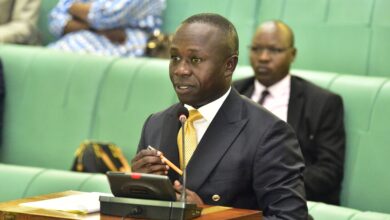What makes Pian Upe a gem of a wildlife reserve?
Pian Upe is the second biggest gazetted wildlife reserve in Uganda only behind Murchison falls National Park which is the largest gazetted area in the country.

By Hon. Martin Bahinduka
Pian Upe is the second biggest gazetted wildlife reserve in Uganda only behind Murchison Falls National Park which is the largest gazetted area in the country.
It boasts a variety of very unique flora and fauna offerings that can only be seen in the North Eastern part of the country and to be more specific the Karamoja subregion where it is located.
Onto this Pian Upe adds a one-of-a-kind natural cave whose beauty is harnessed by the ancient settlement of early man at Napedet cave which has some very rare historical payments and world-class views that offer visitors great photo opportunities to capture memories.
There is also a lot to enjoy in this area when it comes to cultural immersion from mingling with the locals, the local cuisine, and traditional dances to mention a few.

Gazetted in 1964 by the then government, Pian Upe Wildlife Reserve, covering 2043 square kilometres is one of the most beautiful tour sites in the East African region with eye-catching sceneries.
It’s also the largest Wildlife reserve in the country. The reserve is located in Karamoja in the northeast part of Uganda in Nakapiripirit district.
Due to its mismanagement from the late 70s to the late 80s facing the roughest poaching resulting in the diminishing of animals, it became one of the less visited reserves despite its beauty.
However, in 1996, working semi-independently under the Ministry of Tourism, wildlife, and Antiquities, the Uganda Wildlife Authority (UWA) took over the reserve.
Currently, under the Mountain Elgon Conservation Area, Pian Upe covers nine districts of Nakapiripirit, Amudat, Nabilatuk, Napak, Katakwi, Bulambuli, Bukedea, Kween and Sironko.
The reserve then had only five (5) Giraffes compared to the current 41 after the translocation of 29 from Murchison Falls.
Since UWA took over, zebras have also increased to seventy (70) from three (3), Topis rose from five (5) to over ninety (90) now.
Buffalos and Elands have registered the greatest number of growth over the years striking from 25 to 400 and 20 to 1,000 respectively.
Why should one visit Pian Upe?
This reserve is a habitat to dramatic and spectacular landscapes comprising of the volcanic mountain of Napak, the foothills of mountain Kadam, and Inselburgs.
The hills adjacent to Girigirk River, grasslands and wetlands around Lake Opeta, rivers, and springs all spice up the beautiful scenery of the reserve.
It being the largest game reserve, Pian Upe has the most beautiful scenery and magnificent geological assets ranging from mountain Kadam, Napak, holekek inselburgs. The reserve is also home to exceptional bird species and wildlife species.
This remarkable reserve also has hot springs and it is known as one of the incredible destinations with mercury wells at mountain Kadam.
Rich cultural heritage surrounding the reserve ranging from the languages, artifacts, foods and dances, rock artefacts of Napak, Napedet Mulukanyaku cave are the other memorable features.
The cave at Napedet is another alluring site. Initially a hunting ground for Pian and Upe tribes, the cave/ site had a number of activities including hunting and camping. It’s exactly opposite the Kadam Mountains this cave was also used in different cultural rituals like peace-making.
It represents the Geological and cultural elements of the tribes. It has rock paintings annals it’s background.
The region also has other rock paintings in Mulukanyaku and other newly discovered in Napak mountains
Progress
In the last five (5) years, the number of visitors to Pian Upe Wildlife Reserve has tremendously grown.
However, during the COVID-19 era, the numbers went down due to restricted movements and economic hardships.
Numbers have gradually shot up as visitors to the reserve were 1,100 as per last year’s registered statistics.
The government has also taken steps to solve most of the long-lived challenges of insecurities and accessibility.
The government has constructed a passable road network, an airfield in Pian Upe Game Reserve, and the Kidepo Game Park airport whose construction was commissioned recently.
Upon completion, accessibility to the wildlife reserves will be smooth and foster increasing visitors.

However, the game reserve still grapples with a number of challenges ranging from ineffectiveness in management and staffing, human-wildlife conflict, inadequate funding from the government, poaching, illegal wildlife grazing bush burning/illegal fires, encroachment, low visitor numbers due to inadequate marketing of the place and inadequate research.
It is important to note that after the Tourism Ministry, Miss Uganda, Miss Tourism Queens, and Breathtaking Uganda’s four-day tour to Pian Upe recently, the reserve has been found to have real potential to change the whole face of Karamoja if given the desired attention.
With Pian Upe providing the rarest opportunities to see a game like cheetahs, ostriches, roan antelopes among many other animals plus the unique flora, fauna, and breathtaking landscapes patent to these reserves and the famous Napedet cave, the immersive Karimojong traditions, lifestyle and way of life by eating authentic Karimojong based meals, drink, dressing in their cultural dressings, listening to Karimojong folksongs and tales and their dances make the region one of the most beautiful places to visit.
If given the right Marketing and effective management, Funding infrastructure (Roads, Modern toilets, Accommodation facilities, demarcating boundaries, introducing key wildlife species, creating conservation awareness, compensation to individuals affected during human-wildlife conflict, and improved research, Pian Upe can easily be Uganda’s leading or among the leading tourism attractions.
The Author is the Minister of State for Tourism, Wildlife and Antiquities
Government of Uganda






